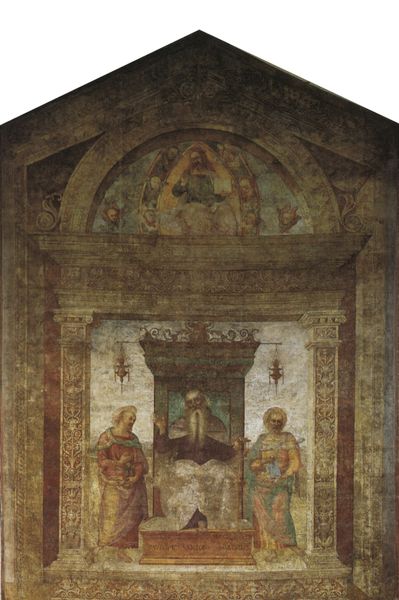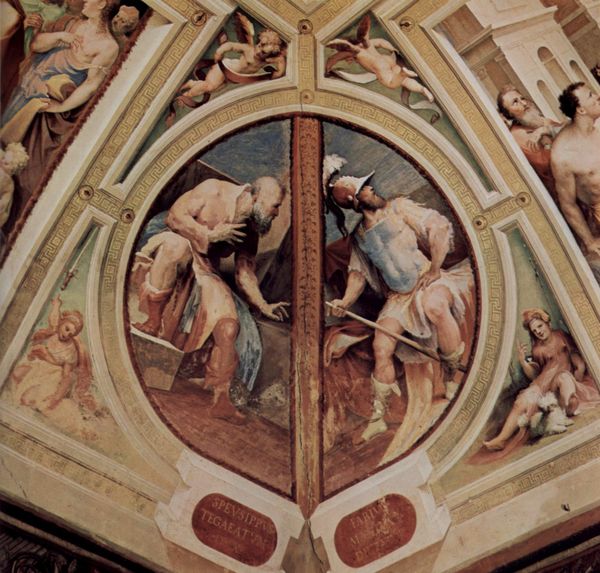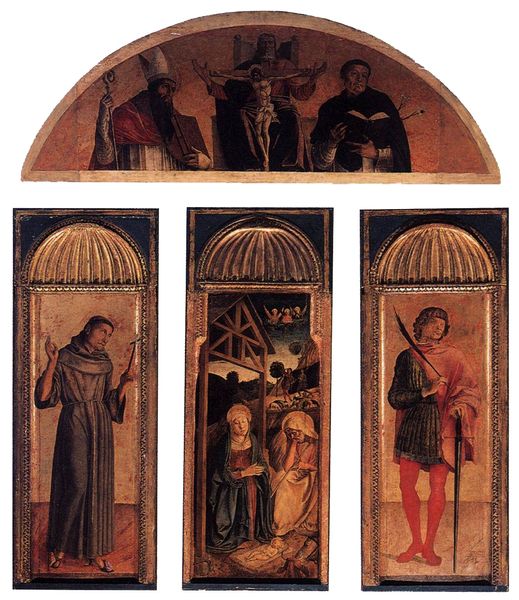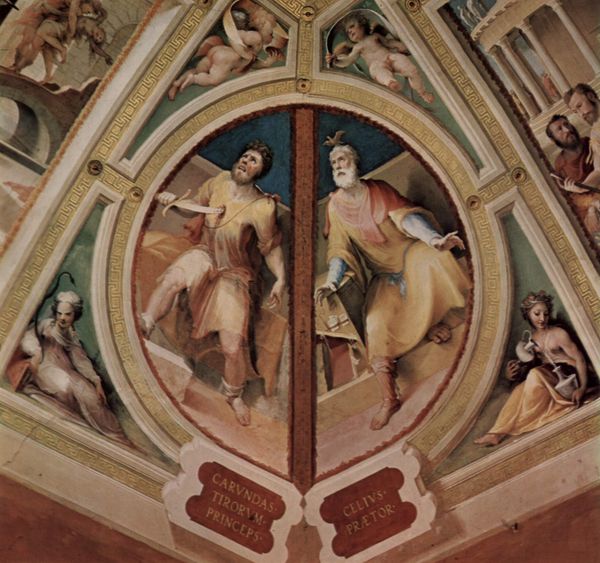
painting, oil-paint
#
portrait
#
venetian-painting
#
painting
#
oil-paint
#
sculpture
#
mannerism
#
figuration
#
oil painting
#
history-painting
Copyright: Public domain
Curator: This captivating piece is titled "Illusory Door," painted in 1561 by Paolo Veronese, a master of the Venetian School, employing oil on canvas. It plays with our perception, doesn't it? Editor: Absolutely. My first thought is how unsettling it feels! The pale stonework surrounding that 'door' makes the figure stepping through seem almost like an intruder. The sculpture's monochrome adds to this stark, almost voyeuristic tension. Curator: Precisely. Veronese was working in a time when artistic patronage and social status were closely linked. Art was inherently political. A piece like this blurs the lines between architecture and painting, between real space and illusionistic space, showcasing the patron's sophistication and wealth. It elevates the everyday. Editor: I’m curious about the depiction of the women flanking the central doorway, set into niches with small illustrative artworks underneath. What's the historical thinking on their identity, and could they be an allegory? Curator: They function almost as stage props, don't they? Art history tradition casts the statue on the right as painting. They embody ideals and perhaps subtly highlight gender roles prevalent in that era, reflecting the restricted agency of women in Venetian society. They seem confined by their sculpted forms, passive observers. Editor: That echoes the feeling the whole painting provokes. And what about the man? Is he aware of the viewer? The composition traps the viewer. Curator: A crucial aspect is the concept of sprezzatura—effortless grace— valued in Renaissance society. This painting presents the ideal courtier and the painting might symbolize how the nobility saw themselves in that era, which had the function of re-asserting established gender norms. The architecture emphasizes the aristocratic roots. Editor: It’s a disturbing snapshot. What starts as the playful mastery of illusion becomes this layered commentary on power, gender, and observation, especially concerning its place in history. Thank you. Curator: Thank you. The painting opens so many paths for critical thinking about image-making itself.
Comments
No comments
Be the first to comment and join the conversation on the ultimate creative platform.













